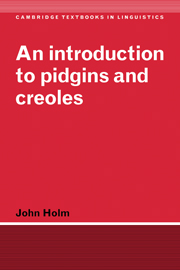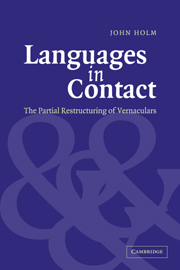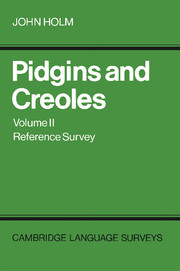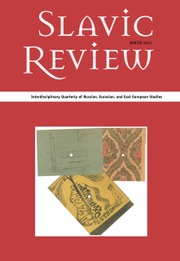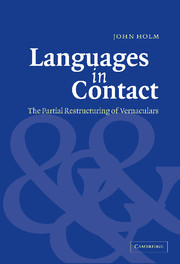An Introduction to Pidgins and Creoles
This textbook is a clear and concise introduction to the study of how new languages come into being. Starting with an overview of the field's basic concepts, it surveys the new languages that developed as a result of the European expansion to the Americas, Africa, Asia and the Pacific. Long misunderstood as 'bad' versions of European languages, today such varieties as Jamaican Creole English, Haitian Creole French and New Guinea Pidgin are recognized as distinct languages in their own right. John Holm examines the structure of these pidgins and creoles, the social history of their speakers, and the theories put forward to explain how their vocabularies, sound systems and grammars evolved. His new findings on structural typology, including non-Atlantic creoles, permit a wide-ranging assessment of the nature of restructured languages worldwide. This much-needed book will be welcomed by students and researchers in linguistics, sociolinguistics, western European languages, anthropology and sociology.
- Clear and concise introduction to the study of how new languages come into being
- Survey of the new languages that developed as a result of the European expansion to the Americas, Africa, Asia and the Pacific
- Written by Professor John Holm, the author of Cambridge University Press's successful and highly regarded Pidgins and Creoles
Reviews & endorsements
'The style in which the book is written is generally accessible and clear … The book is generally well-produced, containing a list of abbreviations, a 15-page index, and two detailed language maps.' Journal of Pidgin and Creole Languages
Product details
November 2000Paperback
9780521585811
308 pages
226 × 152 × 25 mm
0.43kg
2 maps 8 tables
Available
Table of Contents
- List of tables
- Preface
- Abbreviations and symbols
- Maps
- 1. Introduction
- 2. The development of theory
- 3. Social factors
- 4. Lexicosemantics
- 5. Phonology
- 6. Syntax
- 7. Conclusions
- References
- Index.

